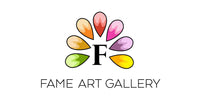Giotto di Bondone
Giotto di Bondone - The master of Fresco painting
Introduction
Popularly known as Giotto, Giotto Di Bondone was born in 1267 and lived through the late Middle Ages. The Italian painter lived in the epicenter of European Art and expression, Florence. Most of his works were done during the Gothic and Proto-Renaissance Period. According to many of his acquaintances and contemporaries, Giotto was very masterful in painting and painted figures in the most naturalistic way. He introduced a new painting style, separate from the Byzantine style of painting that was famous at that time.
Early Life
It is believed that Giotto was born in a farmhouse near Romignano. However, his actual birthplace is in Florence, Italy. Even though his name is publicly accepted as Giotto, it could have been an abbreviation of Angelotto or Ambrogiotto. It is debatable whether Giotto stumbled upon painting or the art itself chose him.
Born to a blacksmith father, Giotto grew up as an intelligent shepherd boy. However, he had a natural ability to draw life-like figures. He was thus, discovered by Cimabue, a famous Florentine painter, who offered him an apprenticeship in painting. Even as a young artist, Giotto was highly skilled. By 1290, Giotto was a famous and established European painter with multiple painting projects to his credit.
Famous Artwork
In his early painting career, Giotto went on to paint detailed fresco-style paintings. He painted a fresco cycle for the Archbasilica of St. Lateran. Similarly, he also painted the Badia Polyptych at this time. In 1297, Giotto painted the Stigmatization of St. Francis. By the early 1300s, Giotto had become an influential painter, probably running art workshops and estates under his name. Yet, in 1305, Giotto painted his most famous artwork, the fresco at the Scrovegni Chapel that remains intact till today. Giotto’s style of painting was different from his contemporaries. He made detailed three-dimensional paintings that captured human emotions and features in great detail.
Final Years and Death
During the later period of life, Giotto continued to work on frescos and designing too. He went on to paint fresco cycles in Basilica of St. Anthony and Palazzo Della Ragione. Some of his final years were spent in Padua, Rome, and Florence. Giotto emerged as the contemporary of famous painter Dante. The Florentine painter died in January 1337 and is said to be buried at the Cathedral of Florence.


